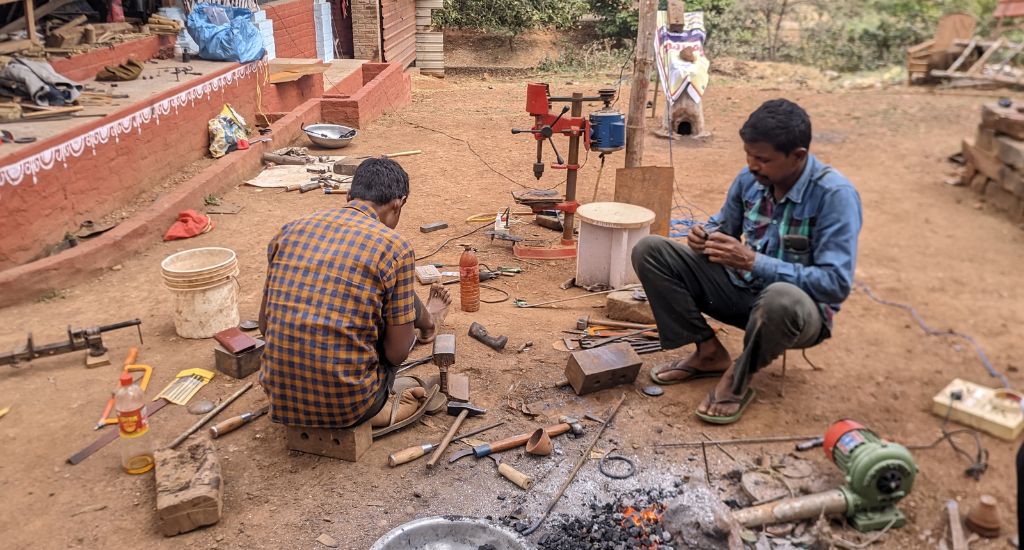The deep, wooded interiors of Madhya Pradesh are far removed from civilisation and filled with curious tales. Here, in the heart of India, lies a story of a family — perhaps the last of their kind — who perform what many might consider alchemy: transforming stones into iron.
This remarkable feat owes nothing to spells or magic but to a profound understanding of nature and scientific principles honed by generations of the Agaria tribe.
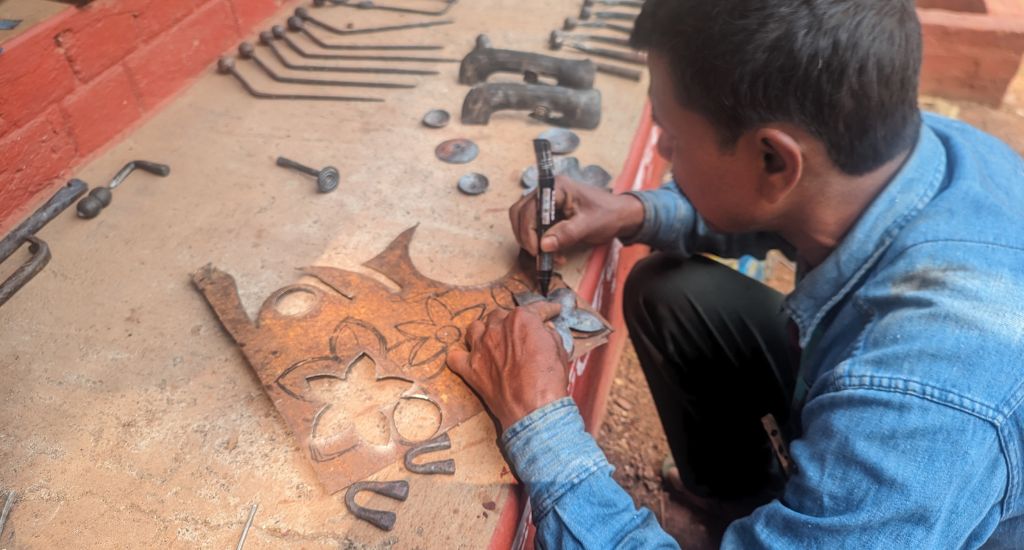
Once celebrated by industrial giants like Tata and studied by luminaries such as Michael Faraday, the Agaria tribe now teeters on the brink of extinction, with only the Maravi family of Dindori district upholding a legacy that once defined an entire community.
Santu Maravi, a young artisan, and his uncle Moti Marvai, are the torchbearers of this dwindling craft.
“Our ancestors somehow had knowledge that this particular stone could be used to extract iron. It is called kaleji patthar,” Moti Marvai said. “Kaleji means liver. The stone has the ferrous red colour of the liver. They would know where to find the stone. It is usually found five-six feet below the ground. They would heat the stone in a furnace, melt it, and hit that melted iron to make tools, etc.”
Against all odds, the uncle and nephew have preserved the traditional methods of producing high-grade wrought iron using a backyard furnace and also taken their craft to the national stage.
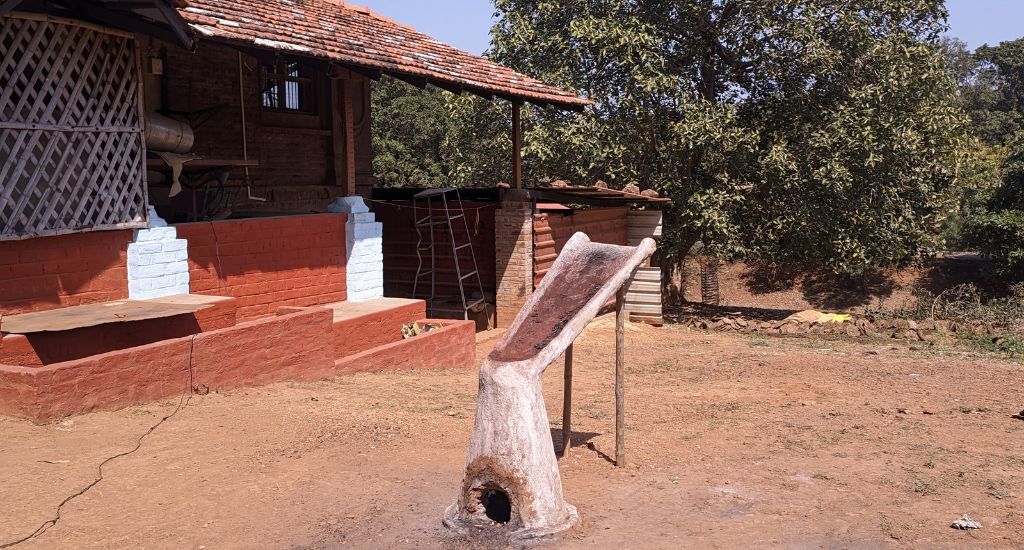
Through exhibitions and demonstrations across the country, 36-year-old Santu has showcased his extraordinary talent in shaping iron into works of art, from animal and plant motifs that seem to defy the solidity of the medium to functional items like hangers, key holders and coffee tables that blend traditional aesthetics with modern utility.
The iron they produce is used to prepare tools for farmers and is also supplied to places like Vigyan Bhawan in New Delhi and the tribal museum in Bhopal.
Hauled over hot coal
Historically, the Agaria tribe of central India, spanning the Mandla, Dindori, Balaghat and Sidhi districts of Madhya Pradesh, was renowned for their unparalleled skill in extracting and forging high-quality steel.
However, during the Industrial Revolution, the colonial government viewed them as a threat to modern factories in Britain. In 1817, the British declared the Agaria a criminal tribe as part of their policy of “de-industrialisation” aimed at destroying Indian handicraft industries and traditional skills, turning the colony into a mere exporter of raw materials.
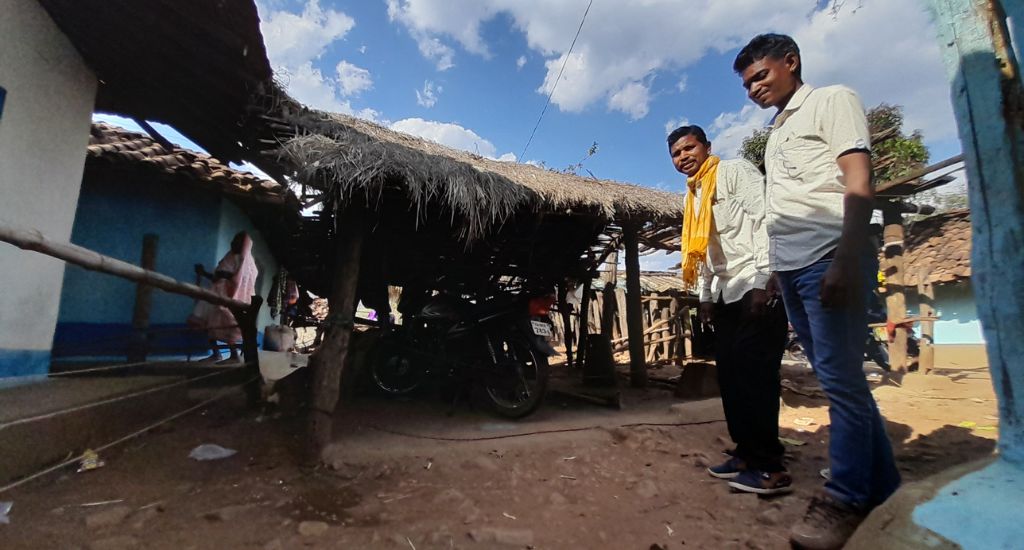
The decree forced the Agarias to retreat into deeper forests away from mainstream society. Seen as dangerous and untouchable by other communities due to the law, they were stripped of their right to their basic resource: iron ore. This treatment has had lasting effects, and the community continues to struggle for dignity and livelihood.
In 1904, industrialist Dorabji Tata witnessed this craftsmanship first hand, an encounter that later led Tata Iron and Steel Co (TISCO) to commemorate the Agaria tribe’s contributions in a 1942 advertisement.
Furnace, the masterpiece
British-Indian anthropologist and ethnologist Verrier Elwin, in his 1942 book ‘The Agaria’, marvelled at the tribe’s craft. “If someone has seen the furnace of the Agaria that was used to smelt iron, they would have appreciated the simplicity of the device that was constructed using the minimal materials available locally and using the thumb and fingers as the only measures. Yet the blast angle, the precise width and spacing of the flute are strikingly precise as expected by theory,” he wrote.
According to Elwin, these portable furnaces, easily abandoned, were the crucibles in which the finest Wootz steel was born — the very steel that forged the legendary Damascus swords and stands immortalised in the Iron Pillar of Mehrauli, New Delhi.
The furnace is a marvel of simplicity and efficiency.
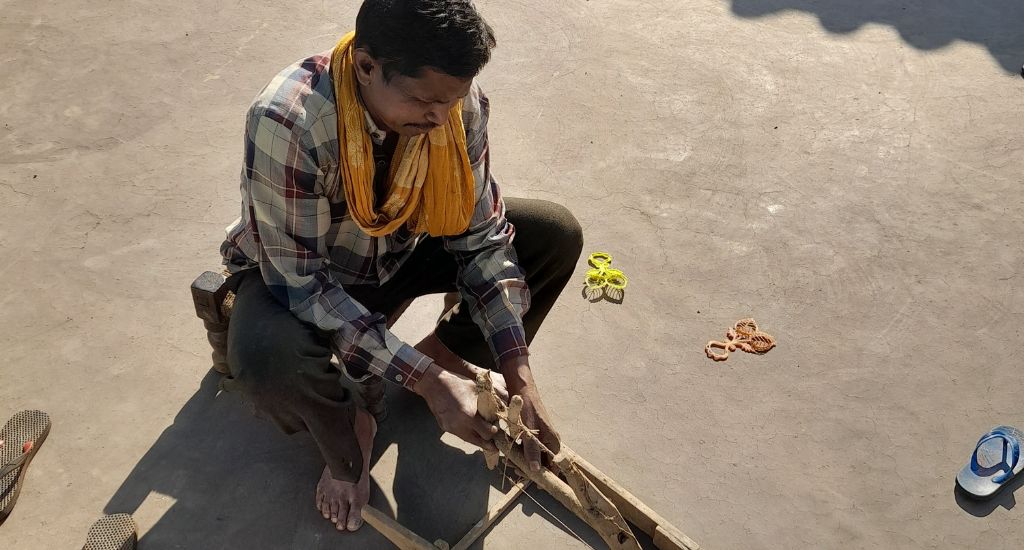
“We prepare a mud furnace in which we put the kaleji patthar along with coal. We pump air into the furnace through a pair of bellows, which we operate with our legs. The process continues for four hours and the outcome is around 200 grams of iron,” said Santu, adding that the iron they make is rust-free.
The Maravi family’s work has reclaimed the dignity of their people and ignited interest in a craft on the verge of being forgotten.
A few from the community have begun to learn from the uncle-nephew duo. This once maligned and marginalised community sees a flicker of hope through their efforts, preserving an ancient tradition while forging a path towards a more dignified future.
The lead image on top shows Santu Maravi and his uncle Moti Marvai making iron tools. (Photo by Unnati Sharma)
Unnati Sharma is a journalist, writer, and translator. She has worked with ThePrint as a Senior Correspondent specialising in politics, in-depth features, and art and culture stories.

